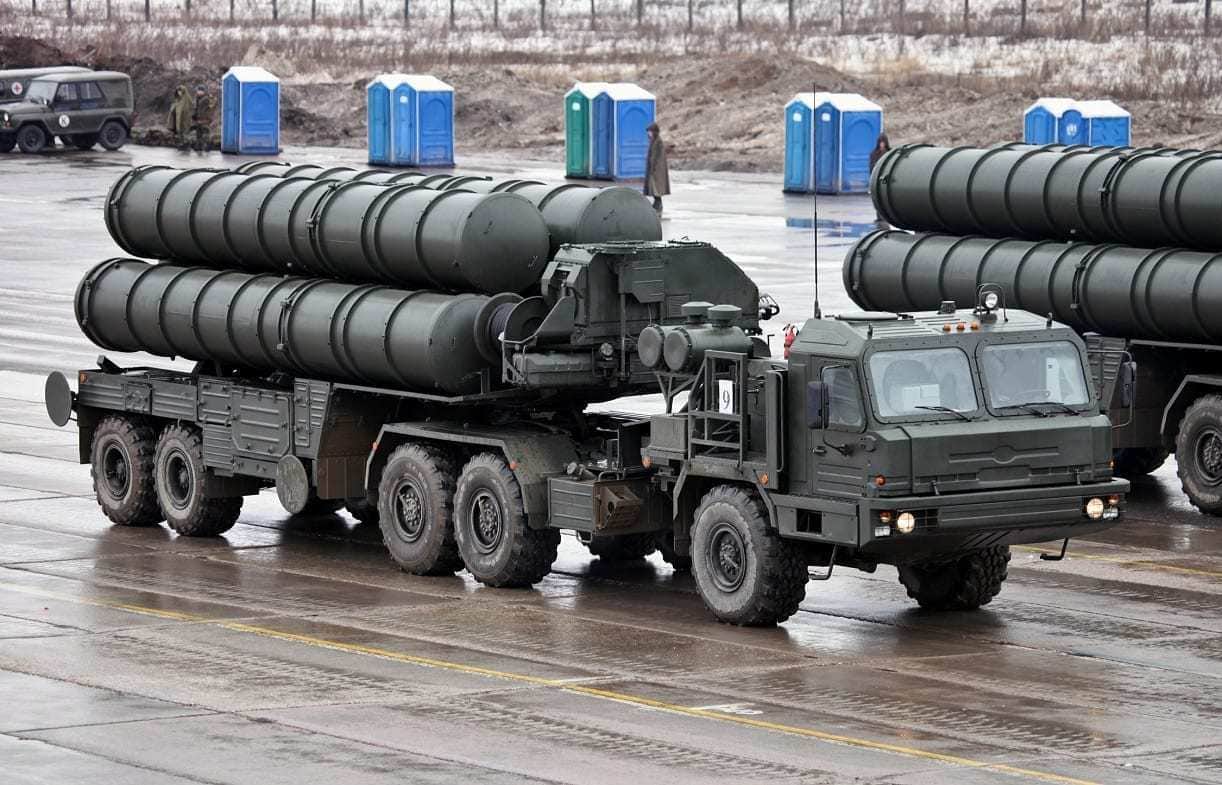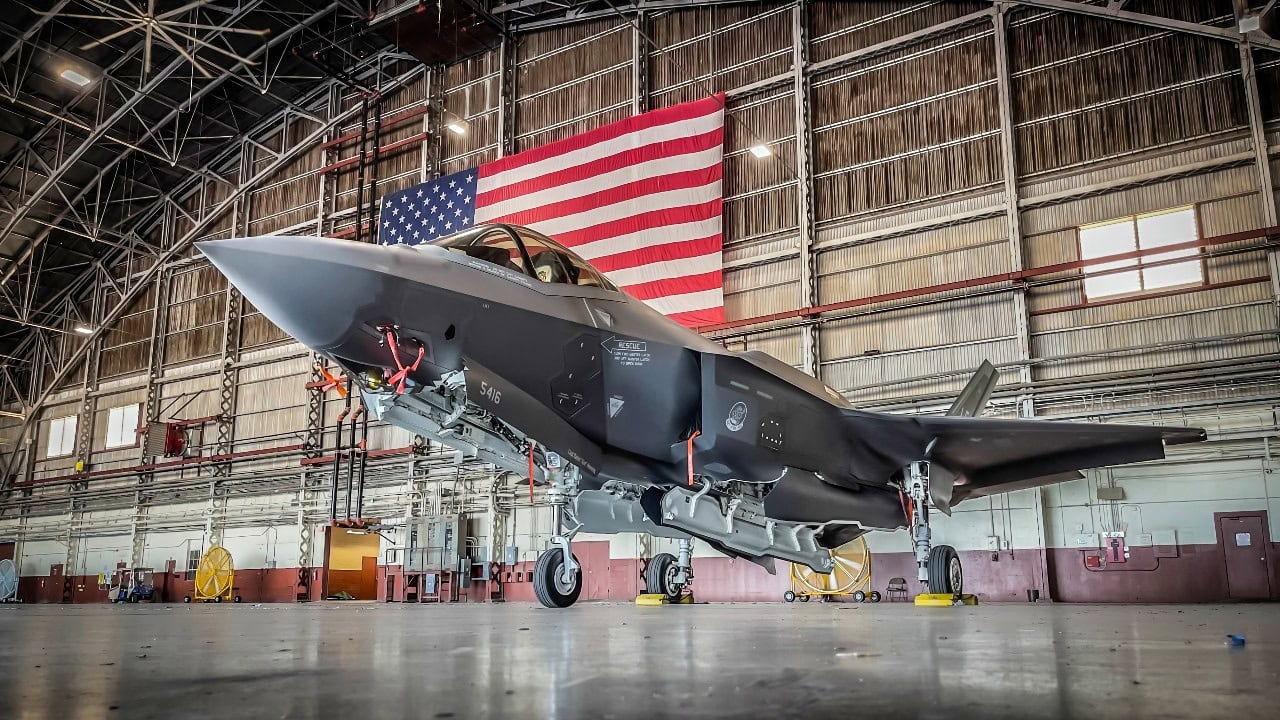Key Points and Summary: Russia’s S-400 air defense system is designed to track and destroy targets up to 250 miles away, raising concerns about its ability to counter U.S. stealth aircraft like the F-35 and B-21.
-While Russia claims its S-400 and newer S-500 can detect stealth jets, experts remain skeptical.
-U.S. military planners are developing countermeasures, including long-range standoff weapons, electronic warfare jamming, and drone swarms to overwhelm or disable Russian air defenses.
-The battle between stealth aircraft and air defense systems is intensifying, but it remains unclear whether the S-400 poses a real threat to America’s most advanced warplanes.
-Variants of Russia’s S-400 air defense system can destroy targets at ranges up to 250 miles, distances that place aircraft from long ranges and at high altitudes at risk of being tracked and destroyed.
S-400 vs. F-35 & B-21: Can Russian S-400 Air Defenses Beat U.S. Stealth?
Russia’s indigenous air defenses, evolving from the S-200 to the S-300, S-400, and now S-500, are regarded as among the most effective in the world due to their engineering and a series of modern technological enhancements.
The S-400 Triumf has been in service with the Russian military since 2007 and exported or sold to some foreign countries such as Iran, India, Turkey, and China; it’s a Surface-to-Air Missile system is capable of firing a 143 kg high-explosive fragmentation round, according to CSIS Missile Threat.
S-400s to Turkey & India?
The sale of S-400s to Turkey and India has been the source of ongoing tension between the United States and Turkey and India, as the Pentagon is not happy with the idea of US allies operating advanced Russian technology.
Russian media reports in publications such as TASS regularly report that the advanced S-400 and S-500 SAMS can track and hit stealth aircraft. However, that remains unverified. Russia has a history of touting its military technologies beyond their actual performance, yet reportedly, the S-400s operate with significant technical improvements.
One of the most significant areas of improvement relates to digital networking, as “nodes” or groups of S-400s can now increasingly send threat data to one another across distances to form a tracking “web” handing off target tracks from one radar field of view to another.
It may not be clear how fast or effectively this happens, yet the digital networking would make an enormous difference. Improved technology has also enabled the S-400 to track aircraft at much longer ranges and on a greater number of frequencies. A relevant question would relate to whether these next-generation upgraded air defenses have an anti-jam capability, which would “harden” detection capability.
However, while low-frequency S-400 “surveillance” radar may be able to detect that something is “there” in the sky across a wide area, that does not mean the system’s S-400 high-frequency engagement radar can establish a narrow target track and successfully “hit” the target.
Achieving a radar “lock” on a high-speed stealth aircraft would seem to remain highly unlikely, particularly in the case of high-altitude, fully horizontal US Air Force bombers such as the B-2 and B-21. Without having any vertical structures and operating with a fully blended wing-body configuration, stealth bombers such as the B-2 and B-21 are intended to elude both surveillance and engagement radar, creating a situation where an enemy does not even know an aircraft is there at all.
S-400 Countermeasures
Despite the growing ability for S-400 air defenses to potentially track and hit stealth aircraft, there is little evidence that such an ability has been verified. In the case of an F-22 or F-35, for instance, a SAMS radar may determine that something is in the area but lacks the speed, precision, and radar detection to establish a “lock” on a super high-speed, stealthy 5th-generation aircraft.
Countermeasures are likely of great significance as the US and the Pentagon have been fast-tracking cutting-edge technologies and tactics designed to counter advanced Russian air defenses for years. The first prospect that comes to mind relates to the simple question of range, meaning the US is developing or already operates a group of long-range weapons designed to target air defenses from standoff ranges from beyond where the launching aircraft could be hit.
For example, the emerging nuclear-capable Long Range Standoff (LRSO) capability is built to strike enemy air defenses from outside of the targeting scope of Russian air defenses. There are land-fired possibilities, particularly when emerging US Army weapons are considered.
The Typhoon Missile System, for example, is able to fire a land-based SM-6 or Tomahawk, and the Army is fast-tracking land-fired hypersonic weapons such as the Long Range Hypersonic Weapon.

Russia’s S-400 Air Defense System. Image: Russian Military.
These ground weapons are developed specifically to attack and destroy enemy air defenses from safer ranges. This is also a significant part of the intent of the Army’s Precision Strike Missile, which can strike targets at high speeds out to ranges of 250 miles.
Drone Attack
There are several ways drones and unmanned systems could prove effective against Russian air defenses; drones could emit an EW “jamming” attack to throw off, obscure, or fully “block” the ability of ground-based SAMS to track an aircraft.

S-400. Image Credit: Creative Commons.
Of even greater importance, the Pentagon is working on launching drone “swarms” from large aircraft such as a C-130 or B-52 capable of fully blanketing an area with ISR or overwhelming S-400 radar with a “mass” of incoming drones armed with both EW ability and kinetic “explosive” weapons.
About the Author: Kris Osborn
Kris Osborn is the Military Technology Editor of 19FortyFive and President of Warrior Maven – Center for Military Modernization. Osborn previously served at the Pentagon as a highly qualified expert in the Office of the Assistant Secretary of the Army—Acquisition, Logistics & Technology. Osborn has also worked as an anchor and on-air military specialist at national TV networks. He has appeared as a guest military expert on Fox News, MSNBC, The Military Channel, and The History Channel. He also has a Masters Degree in Comparative Literature from Columbia University.

